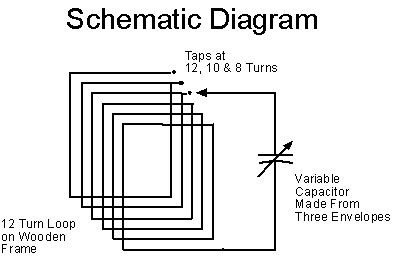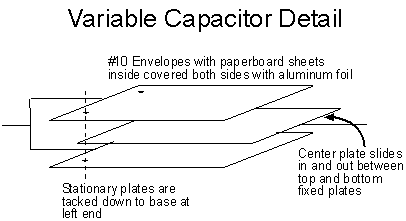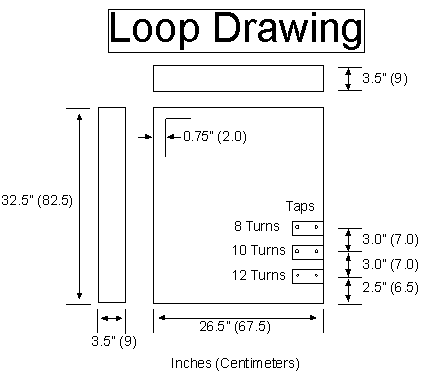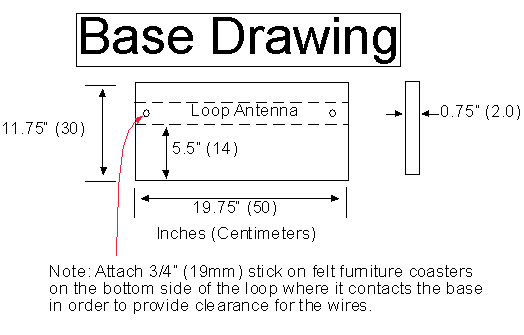Broadcast Band Loop Details

Overview
Note: The greater the number of turns the lower in the AM broadcast band (and below) the loop will tune.
The loop can be build on any convenient frame and as long as the circumference is approximately the same as the mechanical section below, the 12 turns will also remain the same.
Use any wire you have on hand: bell wire, house wiring or just scraps and bits linked together to get the 12 turns required.
Specifications: Capacitor Range: 35 to 450pf Loop Impedance: 300uh Tuning Range: 433KHz – 1.5Mhz with coverage for the remainder of the AM broadcast band and above adjusting the taps.
Capacitor

Cover the paperboard insert cards on both sides with conventional (not non-stick) aluminum foil and seal them in the envelopes. Each envelope is provided with a corner cut-off to provide for an electrical connection. See YouTube video for details.
Note: To increase the capacitance for tuning the bottom of the AM broadcast band put a weight, like a jar of peanut butter, on the top of the capacitor to bring the plates closer together and thus provide more capacitance & a lower resonant frequency for the loop.
Mechanical Construction


Design Notes
Tuning Range at bottom of AM Broadcast Band
To increase the capacitance for tuning the bottom of the AM broadcast band put a weight, like a jar of peanut butter, on the top of the capacitor to bring the plates closer together and thus provide more capacitance & lower resonant frequency of the loop.
You can also add additional plates to the capacitor. For example two moving plates and three fixed will extend the range of the loop through the bottom of the broadcast band and into the high end of the low frequency (LF) aviation beacon band. Adding turns to the loop will move the frequency range even lower.
Noise Problems
Electromagnetic noise from compact fluorescent light bulbs (CFLs) and computers can drowned out weak signals from distant stations. If you have a basement available consider moving the loop down there as the signals from AM broadcast stations are able to penetrate a short distance underground while the “electromagnetic fog” from your home will be a farther distance away and thus drop the noise. Likewise, moving the loop to the attic can help too. In either case, provide a long cord between the external speaker jack and where you want to listen to your radio with an extension speaker. If you would like a video on how to rig up such an extension speaker using Wire Glue to make the connections please email me:
The loop can also be electrostatically shielded from noise. If you would like a video on how to modify this loop with shielding please email me: info@wireglue.us
Your Loop Creation
Everyone has their own way to build a loop. If you would like to send me a couple of pictures of your version of the loop and a few words on the new stations or DX you were able to pick up with it, please email your story to me at (info@wireglue.us) I will feature your story on this site.